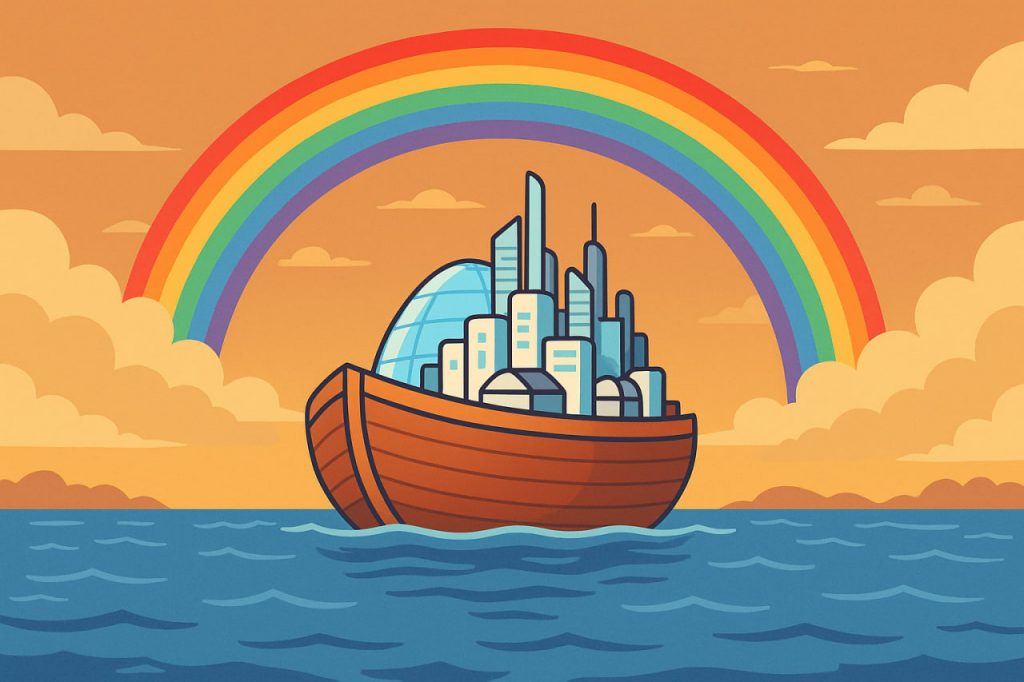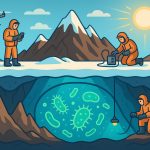The Biblical Flood, also known as the Great Flood of Noah, is one of the most famous cataclysms described in ancient texts. Found not only in the Book of Genesis, but also echoed in Sumerian, Babylonian, Hindu, and Native American traditions, it represents humanity’s near-destruction by water and the promise of a new beginning. While science interprets the story as a symbolic or regional event, the possibility of another global deluge — caused by extreme climate change, melting ice caps, or sudden sea-level rise — raises serious questions about how modern civilization would respond to such a crisis.
The Biblical Story of the Great Flood
According to the Book of Genesis, humanity became corrupt and violent, and God decided to cleanse the Earth with water. Only Noah, described as righteous, was instructed to build a large ark from gopher wood to preserve his family and pairs of every animal species.
The flood lasted 40 days and nights, submerging all mountains under water. When it ended, Noah’s Ark came to rest on the mountains of Ararat, and the waters slowly receded. A rainbow appeared as a divine covenant that such a flood would never again destroy all life on Earth.
Though this story has deep moral meaning — renewal, obedience, and hope — it also may reflect memories of real prehistoric floods, such as the rapid filling of the Black Sea basin or catastrophic post-glacial floods 12,000 years ago or something global we don’t know at the moment…
Scientific Explanations of Ancient Floods
Geologists and archaeologists have uncovered evidence of massive regional deluges:
- Around 12,000 years ago, melting glaciers caused sea levels to rise more than 120 meters, flooding coastal plains.
- The Black Sea Flood theory suggests that Mediterranean waters broke through the Bosporus, inundating vast land areas.
- Sediment layers across Mesopotamia show traces of sudden flooding, possibly inspiring the Noah narrative.
What Humanity Could Do to Survive
If faced with a global flooding crisis similar to the Biblical Flood, humanity’s survival would depend on technological adaptation, global cooperation, and foresight:
- Early Warning Systems and Climate Models
Satellites and AI-based models can now track rising seas and predict major floods weeks in advance. These systems must be expanded and internationally shared to save lives before disasters strike. - Floating Cities and Arcologies
Engineers are already developing floating cities, solar-powered marine habitats, and amphibious houses capable of surviving prolonged flooding. Such technology could replace Noah’s Ark as a modern refuge. - Protecting Freshwater and Agriculture
Desalination, hydroponics, and vertical farming would ensure food production even when traditional fields are submerged or damaged. - Evacuation and Population Relocation
High-risk coastal populations must be gradually moved inland. Global agreements similar to refugee conventions would be essential to prevent humanitarian collapse. - Moral and Ecological Renewal
The story of Noah is not just about destruction — it’s about rebirth and responsibility. Humanity must treat nature with respect and rebuild civilization in harmony with the planet.
Could the “Covenant” Still Hold True?
From a symbolic perspective, the rainbow covenant — a promise of balance between heaven and Earth — remains a warning that human arrogance and neglect could bring about our own downfall. Modern science gives us tools the ancients lacked, but survival still depends on moral choices: cooperation instead of greed, and sustainability instead of exploitation.
Interesting Facts
- Over 200 ancient cultures have flood myths, many describing a single survivor chosen by divine will.
- The Epic of Gilgamesh features Utnapishtim, a flood survivor predating the Biblical Noah by a millennium.
- A full global flood would require over three times the amount of water currently present on Earth’s surface.
- Some scientists believe the flood myths record the end of the last Ice Age when seas rose catastrophically.
- Modern projects like The Ocean Cleanup and floating farms are early examples of “technological arks.”
P.S. Unfortunately, the discovery of ringwoodite and the cycles of expansion and contraction of the planet provide indirect evidence of the reality of such floods. However, if we as a humanity can at least live by higher moral values, love and care for each other, then we will be able to overcome all the challenges of modern civilization.
Glossary
- Tannin deposits — sediments left by floodwaters over land and valleys.
- Arcology — a self-contained, eco-sustainable city structure designed for extreme environments.
- Desalination — removing salt from seawater to make it drinkable.
- Climate refugees — people forced to leave homes due to long-term environmental changes.
- Hydroponics — growing plants without soil, using nutrient-rich water.


